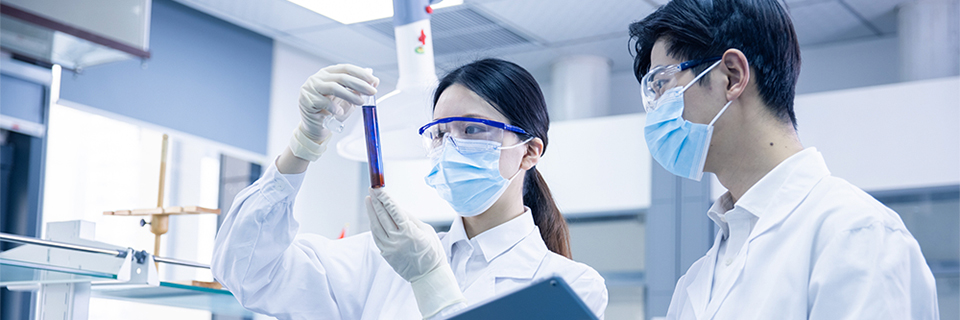
The Source of Our Innovation
The source of our innovation is the strong motivation that comes from spending time with patients and the people in the daily living domain and understanding their real needs, based on our human health care (hhc) concept. Whenever any employee involved in research and development (R&D) is faced with a difficult decision in his or her daily work, he or she always returns to the hhc concept and considers what can be done to give first thought to patients and the people in the daily living domain. The hhc concept is like a guidepost for our R&D activities.
Human Biology
Driven by this hhc concept, our R&D aims to alleviate each disease-related concern of patients and the people in the daily living domain. To do this, it is important to uncover human genome information and the various biological changes that occur in human diseases (Human Biology). In order to formulate and test drug discovery hypotheses, it is necessary to have a deep understanding of Human Biology and to carry out R&D based on this understanding. Human Biology is an extremely important concept that serves as the starting point for all of our R&D.
Our Strengths (Chemistry Capabilities and Data)
Our R&D strengths are our chemistry capabilities and the unique data we possess. Our chemistry capabilities are the ability to create in-house products backed by superior synthetic organic chemistry. We have the chemistry capabilities to identify candidate compounds in a variety of modalities, including small molecules as well as complex natural products, middle molecules, and antibody-drug conjugates (ADCs), and to synthesize these complex compounds efficiently and bring them into commercial production.
In addition, we have unique data based on clinical trials we have conducted. In particular, we possess comprehensive clinical data in the field of dementia and on lenvatinib in multiple cancer types. We will formulate new drug discovery hypotheses based on these data and Human Biology, and combine them with our high level chemistry capabilities to demonstrate our strength in R&D.
Disease Continuum
In many diseases, the progression of the disease can be viewed as a continuum, with many disease-causing changes occurring and accumulating long before symptoms appear. This concept is called the Disease Continuum. Based on this premise, we understand diseases and conduct R&D to provide patients with a full range of options, from prevention to cure, for each broad stage of disease.
4Rs (Right hypothesis, Right population, Right endpoint, Right dosing)
In R&D, it is important that the 4Rs are properly established.
The 4Rs represent the “four rights” that are essential for successful drug R&D: Right hypothesis, Right population, Right endpoint, and Right dosing.
- 1.Right hypothesis is important in setting the target of the drug. Correct hypothesis formulation based on Human Biology is the starting point for all drug discovery activities.
- 2.Right population is the correct study population, consistent with the drug discovery hypothesis, when evaluating a drug candidate created based on the Right hypothesis in a clinical trial.
- 3.Right endpoint is to establish the right endpoints for a drug candidate in terms of science and universality.
- 4.Right dosing is the establishment of an optimal dose to demonstrate the drug discovery hypothesis of a drug candidate.

